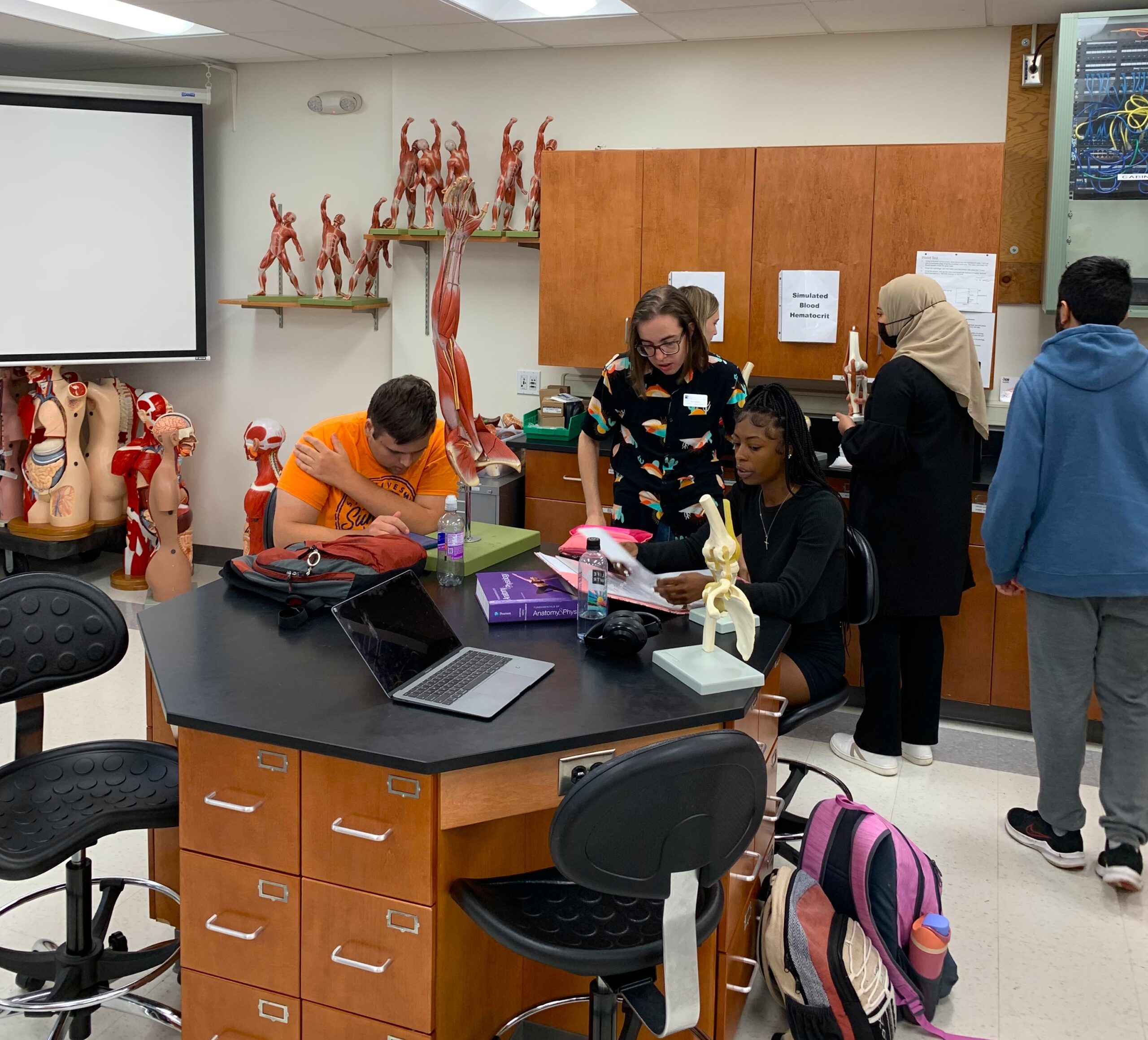Campus installs 52 interior hidden cameras
By: SPENCER GLEASON
Editor-in-Chief
Fifty-two brand new interior hidden cameras have been placed around the 19 buildings that make up the STLCC-Meramec campus. They have been put up following the April 18 incident, in which Meramec student Jevon Mallory attacked fellow student Blythe Grupe in the women’s restroom on the second floor of the Communications North building.
The 52 interior cameras will be in addition to the seven exterior cameras the campus has that oversee the parking lots and directly outside of buildings. With the new security cameras positioned, STLCC hopes to keep their eye on student safety.
DeLancey Smith, Director of Public Information and Marketing for STLCC, also serves on the District-Wide Emergency Awareness Committee. The District-Wide Emergency Awareness Committee is a team made up of the campus police chiefs and other members, along with Smith that meet regularly and talk about safety and security from an STLCC district-wide perspective.
According to Smith, adding interior cameras had been on the table long before the April 18 incident.
“I know they had been in the plans for over a year. The April incident accelerated that process,” Smith said. “The thing about that incident is that we don’t want to lose sight of the fact that an instructor and two police officers immediately responded, preventing what could have been a terrible tragedy. I don’t know if cameras would have prevented that or not. Those people were there on the scene, but regardless, we want to expand our capabilities.”
Although the idea of increasing the camera capability all around STLCC has been in the mix of ideas for over 12 months, cost played a role in delaying the action.
“Don’t misunderstand that, that safety’s not important,” Smith said. “But we’re trying to do what we can with what we got and to make an investment of that size; you have to decide that something else isn’t going to get done. We’re a public institution. Our funds are limited.”
The cameras, which cost $2,359.93 apiece, were funded through a district-wide budget, as opposed to a campus budget. The total cost of the Meramec cameras totaled $125,076.25. In addition to Meramec, they will be put in the STLCC-Forest Park, STLCC-Florissant Valley and STLCC-Wildwood campuses, as well as the Harrison Education Center and South County Education University Center in the near future. Meramec was the first location to have them installed.
“Each location will have a different set of cameras because it was based on, at the time, the district police chief, the campus police chief and the company that was going to be installing the cameras,” Meramec Interim President Pam McIntyre said. “They went walking around and assessed how many corners they have, the blind spots and where they wanted the cameras to be. They went around and determined that they needed 52 cameras. But each campus isn’t built the same. So it may be more. It may be less.”
Vicki Lungwitz, Meramec Police Dispatcher, keeps an eye on the camera system. Although her viewing screen only shows 16 interior camera views at a time, they are all constantly recording.
“Right now we have more cameras, than we do screens,” Lungwitz said. “We have to manually move to the next group of camera shots. But they are all recording, even if they are not showing on my screen. So if we know there’s a problem somewhere we can go back and look at it.”
The new cameras, which are placed in the hallways of all the buildings, as well as the bookstore, cafeteria and gymnasium remain stationary. Lungwitz and the other dispatchers do not have the capability of panning back and forth or zooming in and out. However, the older exterior cameras are movable by a joystick.
When Lungwitz is not manually moving the outside cameras, they move automatically, going on a rotation of five to six different camera angles.
“When they got the new cameras inside, they decided that they wanted them stationary so that they didn’t miss anything,” Lungwitz said. “They thought since there are so many of them hopefully they would get whatever they needed to get, without having to pan back and forth or zoom in and out.”
Though there are new security cameras mounted inside the buildings, the memory of the April 18 incident is hard to forget for students.
Sophomore Katie Harper had class in the Communications North Building every day last spring. This year, she is taking classes at both Meramec and STLCC-Forest Park.
“I don’t feel safe at Meramec. I wasn’t in class [during the incident], but I was in that building every single day,” Harper said. “I’m at Meramec on Mondays and Wednesdays. I’m at Forest Park on Tuesdays and Thursdays. Forest Park is better. I’m not afraid at Forest Park.”
Even with the new camera system situated throughout the campus, Lungwitz is not sure if they will do the trick, but she is pleased that they are in place.
“The quality of the cameras is pretty good, I think,” Lungwitz said. “However, if you really needed to identify somebody, I don’t know if you could do that. But it’s a definite improvement.”
In case of an emergency
To go along with the new interior camera system, STLCC has invested in a new phone system that runs throughout all of the Meramec campus buildings, as well as email updates and twitter updates to students and faculty.
With the new additions in security, information will be more readily available when the necessary time comes.
“The new phone system we have has speakerphones on every phone and there’s a ‘Panic’ button,” Smith said. “There are phones now to do an area-wide announcement. It just comes up on the phone whether the phone’s on or not. There are a number of things we’ve been doing.”
If a situation occurred, according to Smith there would be a series of notifications sent out to faculty and students.
“We’d respond, first of all, with a ‘Net Notify.’ That would hit every open computer that’s on the network with a message. It would go up in every classroom and office. We would put out an STLCC alert through twitter at ‘@STLCCAlert,’” Smith said. “We’re looking into other crisis software systems that allow you to do one message. It would hit an email, text and a voicemail all at the same time. That would really speed up our system. But again, that’s money, too. Because we’re so large, roughly 10,000 students at this one campus, to get 10,000 emails processed out, takes about 15 to 20 minutes. That’s one of the issues that we can’t control. That’s a technology thing. We’re looking at ways to speed that up dramatically.”
Although there are plans in place for such emergencies as an earthquake, tornado and armed intruders, STLCC is looking at ways how they can improve their response during crisis.
“What we’re doing now is going back and reviewing emergency management plans and learning from situations that have occurred and seeing whether or not we’ve learned from those situations,” McIntyre said. “We need to kind of look at how we’re doing things and perhaps do some things a little bit differently then maybe we’ve done them in the past.”











